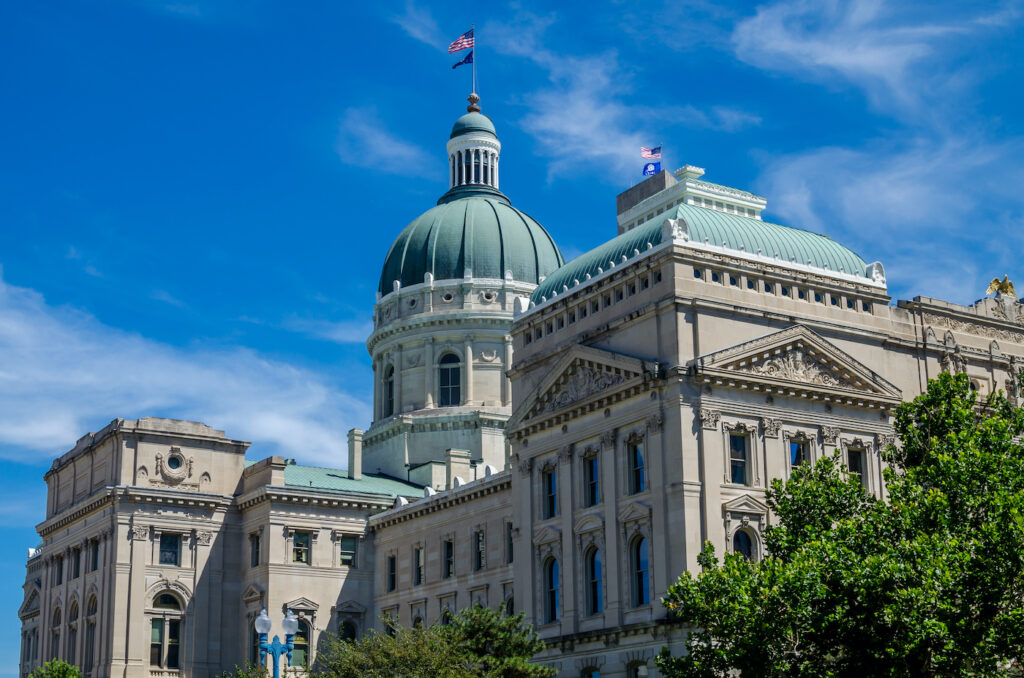For many years, advocates of religious liberty have had to fight back against accusations that religious freedom is a get-out-of-jail-free card. When Indiana’s Religious Freedom Restoration Act (RFRA) was being debated in 2015, it was pummeled with such criticisms. Opponents characterized the bill as giving religious Indianans a pass to violate the state’s anti-discrimination laws and the rights of LGBT people. In one of the most extreme examples—misunderstanding both the bill and religious people—critics even alleged that Christian doctors and EMTs could and would simply refuse to treat any LGBT patients.
Many of those opponents are now cheering as the bill they hated has become a law they love. In December, an Indiana judge determined that RFRA prevents the state from enforcing its newly passed restrictions on abortion, after several Jewish, Muslim, and other religious plaintiffs claimed that their religions sometimes obligate them to obtain abortions for reasons not recognized by the new state law. Indiana has appealed the decision, but this argument has already been raised in courts throughout the country. If progressive religious groups and litigators prevail, religious liberty claims will remain a central challenge to abortion restrictions enacted under the new Dobbs regime. After all, if successful, the argument would achieve two long-held progressive goals: making religious liberty laws unpalatable to the general public, and defending abortion rights.
If progressive religious groups and litigators prevail, religious liberty claims will remain a central challenge to abortion restrictions enacted under the new Dobbs regime.
On a legal level, as we discussed at greater length elsewhere, the judge’s reasoning was wrong. Under RFRA, once a plaintiff has shown that a law burdens her sincere religious practice, the state can still win if it can show that it is advancing a compelling interest in the manner least restrictive of religious liberty. But in this case, the judge denied the state’s claim that it was advancing the compelling interest of protecting fetal life because “the Plaintiffs do not share the State’s belief that life begins at fertilization or that abortion constitutes the intentional taking of a human life.” Having already found that plaintiffs and the state do not see eye to eye, the judge simply handed the plaintiffs a brass ring. Once the religious objectors proved their initial case, it became a fait accompli that the government could not prevail. The state would not be permitted to enforce laws that the court determined were based on principles the religious objectors did not share.
Such reasoning is contrary to Supreme Court precedent and is unlikely to hold up on appeal. It nonetheless provides a good opportunity to think carefully about why the court so readily mishandled a claim of religious liberty, and why groups like ours, the Jewish Coalition for Religious Liberty, will support Indiana in its appeal.
Start your day with Public Discourse
Sign up and get our daily essays sent straight to your inbox.Religious liberty, embodied in the protections of the First Amendment, was never meant to be a trump card over state interests. Rather, it was always meant to strike a balance between majority rule and minority rights, just as the other provisions of the Bill of Rights do. As Orthodox Jews and lawyers (or lawyers-to-be) who see religious liberty as a cornerstone of a peaceful, pluralistic constitutional republic, we want to see that balance preserved. Courts’ scrutinizing state laws to ensure they account for minority interests by being narrowly tailored to achieve their goal is one way that happens. Religious groups’ using the channels of persuasion and politics to get legislative carve-outs is another.
Ultimately, the goal is to find a workable balance between order and liberty, without either of which a republic is impossible. Justice Scalia was right (in a decision with which we generally disagree) when he wrote in Employment Division v. Smith (citing Reynolds, which affirmed the government’s right to ban plural marriage despite its burden on some religious practices) that our Constitution does not “make the professed doctrines of religious belief superior to the law of the land, and in effect . . . permit every citizen to become a law unto himself.” Yet the First Amendment does offer protection for religious practice to a greater extent than it does for mere philosophical objection.
The precise contours of the balance between protecting religious liberty and allowing the states to pursue their compelling interest are difficult to identify in the religious freedom context, just as they are in the context of First Amendment rights to speech and assembly—both of which may be limited to preserve order and the public interest. RFRA represents one attempt to sketch out a balance, by reviewing state action to ensure that states are not sacrificing religious liberty for frivolous ends or recklessly failing to account for the interests of religious minorities unlikely to be represented adequately in the state legislature. State RFRAs may or may not be the right balance between majority rule and religious liberty, but the RFRA model is a good-faith attempt—and it is democratically enacted and subject to revision by democratic means.
By contrast, this Indiana court has signaled that it does not take the concepts of majority rule and religious liberty seriously. Making no attempt to balance state power and individual rights, it struck down a democratically enacted law on the grounds that it violated an unprecedented definition of religious liberty. It gave the state no real opportunity to prove that it had a sufficiently important need to burden religious exercise, much less that it had tailored its regulatory scheme carefully. Plaintiffs seeking religious vetoes over state laws, rather than compromises or carve-outs, similarly signal their shallow view of the relationship between democracy and religion.
Free exercise is a constitutional protection for a reason, and deserves the same reverence we provide the freedom of speech, protection against cruel and unusual punishment, and the due process of law.
Allowed to stand, this ruling would have ghastly consequences for religious liberty. States would have to choose between religious liberty laws and every other law they would enforce, nearly all of which burden someone’s conscience and limit behaviors some people consider obligatory. Faced with such a choice, states will have to give up protecting religious liberty altogether. What appears to be a victory for religious liberty—a court’s granting a religious claim great weight—is really just the opposite.
The plaintiffs’ arguments and judge’s decision bespeak an unfamiliarity with the mechanics and aims of religious exercise protections. That is probably the sad result of religious liberty becoming a partisan issue, as left-leaning Americans are increasingly unaccustomed to treating religion as something worth protecting. After assailing religious liberty as a cudgel for so many years, they have begun to embrace it for the same reasons. Moving from one extreme to the other, they have skipped over the constitutional demand to try to synthesize freedom and order.
But they were wrong then, as they are wrong now. Sincere claims of religious liberty are serious business. Free exercise is a constitutional protection for a reason, and deserves the same reverence we provide the freedom of speech, protection against cruel and unusual punishment, and the due process of law. These all pose challenges when they collide with what majorities want. But neither judges nor legislators can circumvent the challenges of governing a pluralistic republic by simply awarding wins to their favorite causes with whatever tool happens to be at hand.














